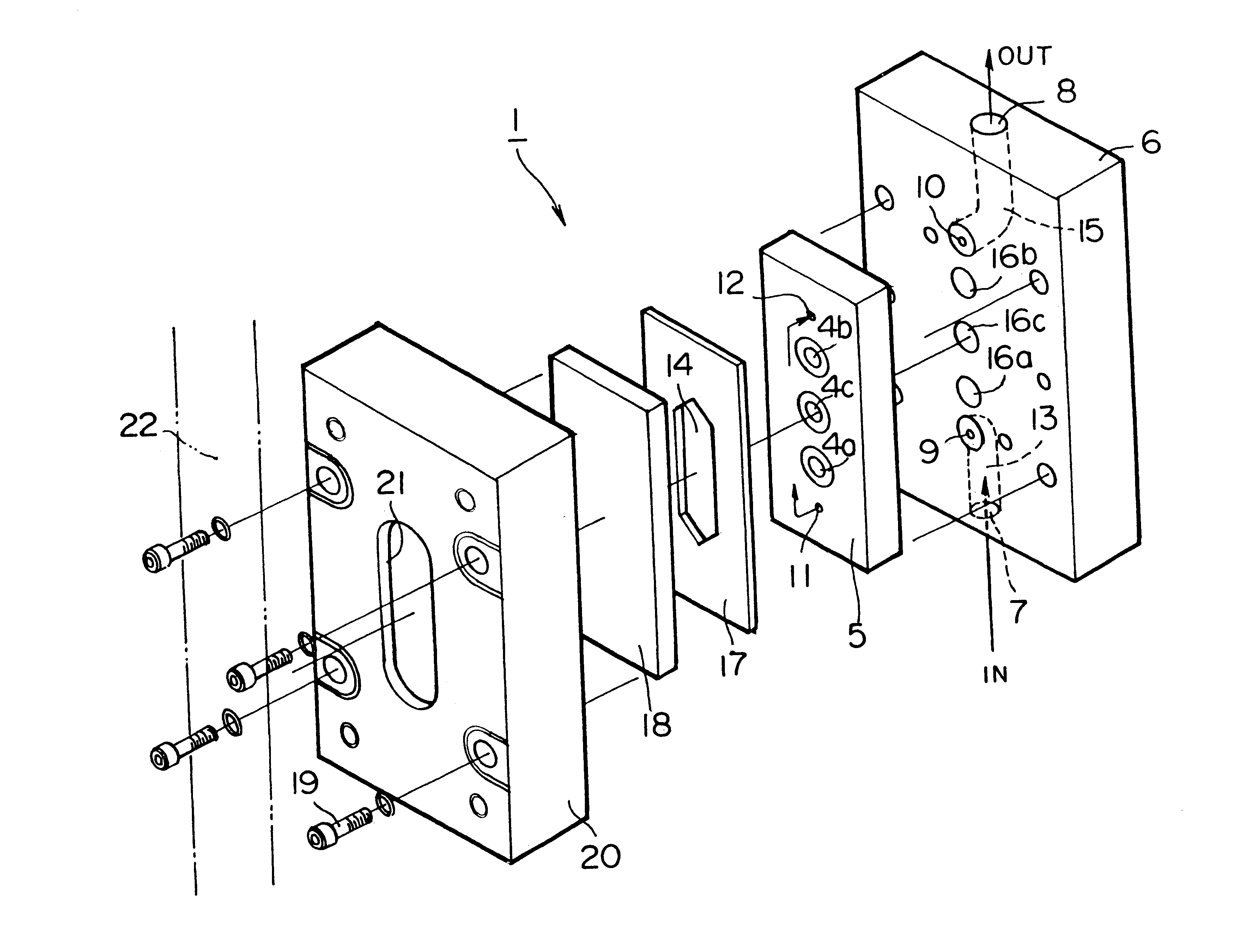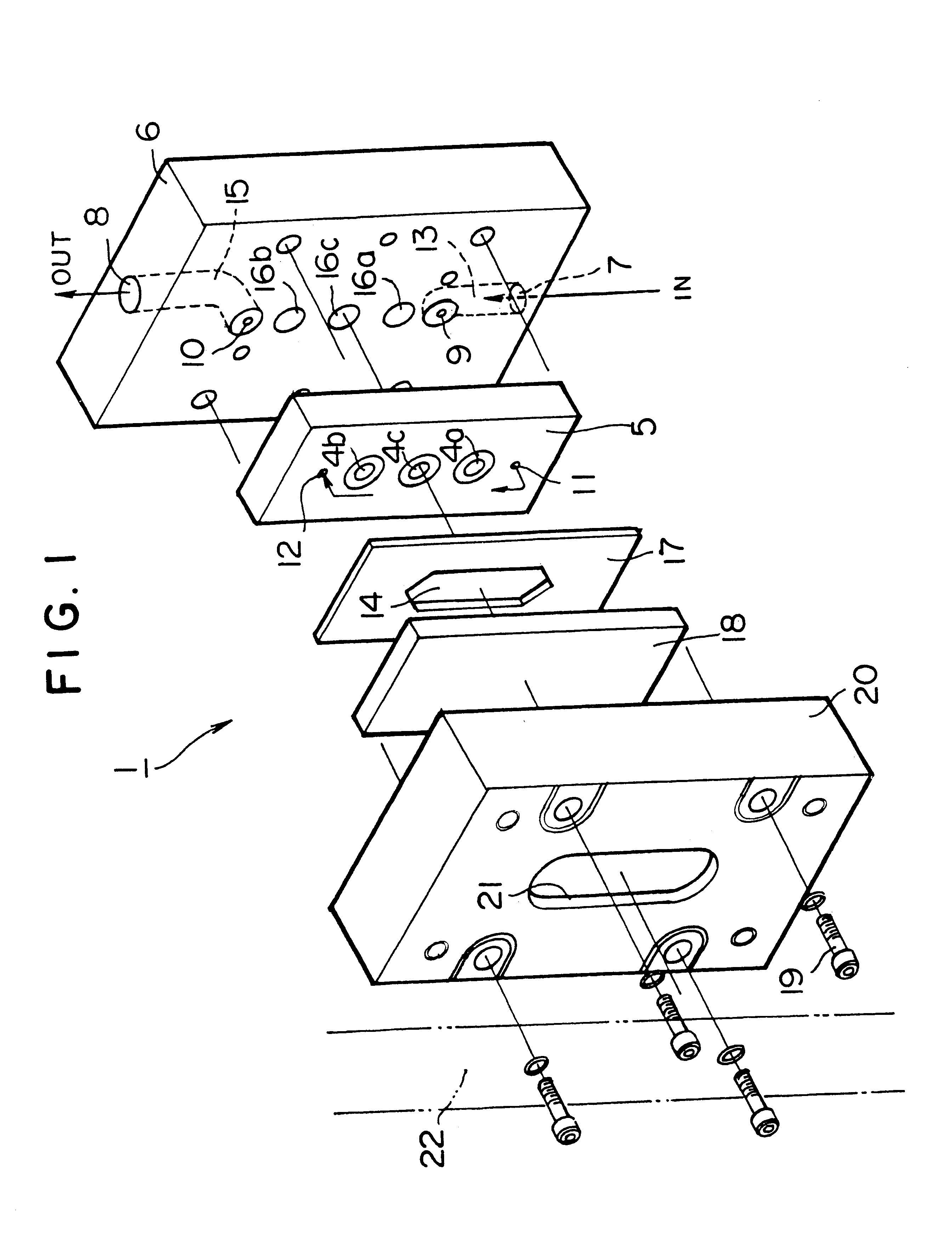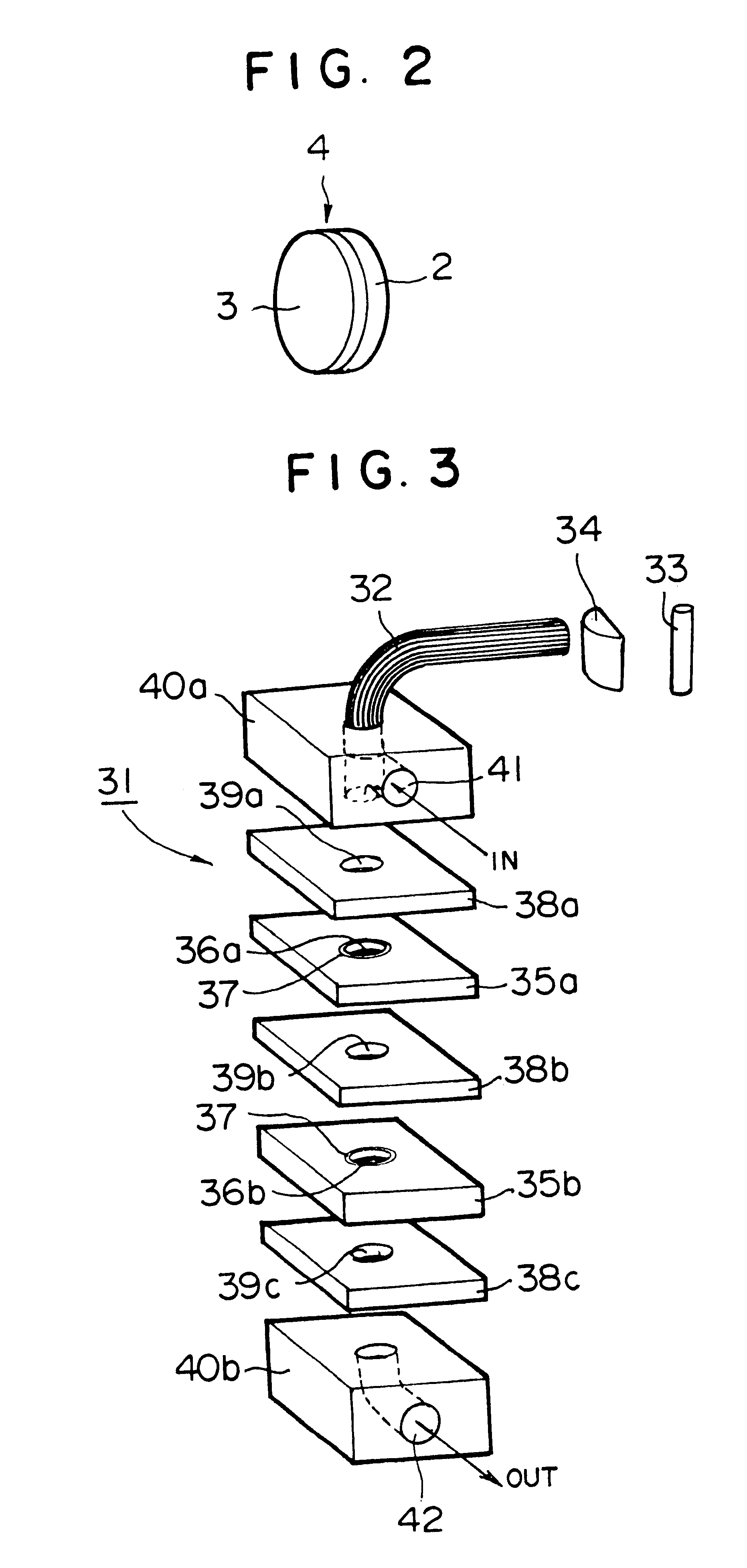Electric conductometer, electrode for measuring electric conductivity, and method for producing the same
a technology of electric conductivity and electrode, which is applied in the direction of resistance/reactance/impedence, instruments, measurement devices, etc., can solve the problems of sacrificing measurement accuracy, affecting the accuracy of measurement, and affecting the repeatability of measurement,
- Summary
- Abstract
- Description
- Claims
- Application Information
AI Technical Summary
Benefits of technology
Problems solved by technology
Method used
Image
Examples
first embodiment
FIG. 1 shows an electric conductometer according to the present invention. In this electric conductometer 1, an electric conductivity measuring electrode 4 wherein an electrode surface is formed by a titanium oxide layer 3 on a surface of an electrode body 2 made from a conductive metal, shown in FIG. 2, is employed. The titanium oxide layer 3 is formed by a surface treatment of sputtering or plating and the like, or is formed by oxidizing the surface of the electrode body 2 made from a titanium metal. The oxidation is conducted by electrolysis or air oxidation.
Three electric conductivity measuring electrodes 4 are used in this embodiment, and are attached to an electrode holder 5 comprising an insulation material, in a condition where the electrode surfaces are exposed, as shown in FIG. 1. Three electrodes 4 are disposed in a raw, and the electrodes 4a and 4b at both sides constitute power supplying electrodes connected to a power source, and the electrode 4c at the center position...
second embodiment
FIG. 3 shows an electric conductoneter 31 according to the present invention. In this embodiment, an optical fiber forming a light guiding material is used as means for irradiating light. Black light 33 of ultraviolet rays is used as a light source, light converged by a dome-type converging lens 34 is irradiated onto an incident end of an optical fiber 32, and the light guided in the optical fiber 32 is emitted from an emitting end of the optical fiber on the opposite side.
In this embodiment, plate-like electrode bodies 35a, 35b are composed of a titanium metal, and titanium oxide layers 37 are formed on the inner circumferential surfaces of holes 36a, 36b opened in the central portion. The electrode bodies 35a, 35b are isolated by being sandwiched between isolation sheets 38a, 38b, and 38c having, respectively, holes 39a, 39b, and 39c in the central portions, and an electric current for measuring electric conductivity flows between the electrode bodies 35a and 35b.
A stacked body co...
third embodiment
FIG. 4 shows an electric conductometer 51 according to the present invention. In this embodiment, three electrodes 52a, 52b, 52c are provided, and for example, the electrodes 52a,52b on both sides are constituted as power supplying electrodes connected to a power source, and the electrode 52c disposed between them is constituted as a detecting electrode functioning as a sensor for detecting an electric conductivity. Through holes 53a, 53b, 53c are opened in the central portions of the respective electrode 52a, 52b, 52c, and a titanium oxide layer is provided on an inner surface of each of the holes 53a, 53b, 53c. Spacers 54a, 54b, 54c, 54d made from a light transmitting isolation material (for example, 4 fluoride-ethylene) are disposed on both sides of the respective electrodes 52a, 52b, 52c, and the respective electrodes and spacers are stacked alternately. Through holes 55a, 55b, 55c, 55d are opened in the central portions of the respective spacers 54a, 54b, 54c, 54d. Support mate...
PUM
| Property | Measurement | Unit |
|---|---|---|
| wavelength | aaaaa | aaaaa |
| wavelength | aaaaa | aaaaa |
| flow rate | aaaaa | aaaaa |
Abstract
Description
Claims
Application Information
 Login to View More
Login to View More - R&D
- Intellectual Property
- Life Sciences
- Materials
- Tech Scout
- Unparalleled Data Quality
- Higher Quality Content
- 60% Fewer Hallucinations
Browse by: Latest US Patents, China's latest patents, Technical Efficacy Thesaurus, Application Domain, Technology Topic, Popular Technical Reports.
© 2025 PatSnap. All rights reserved.Legal|Privacy policy|Modern Slavery Act Transparency Statement|Sitemap|About US| Contact US: help@patsnap.com



